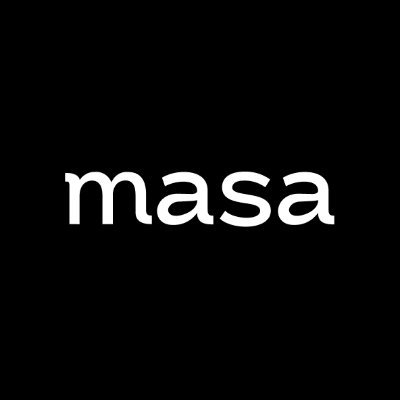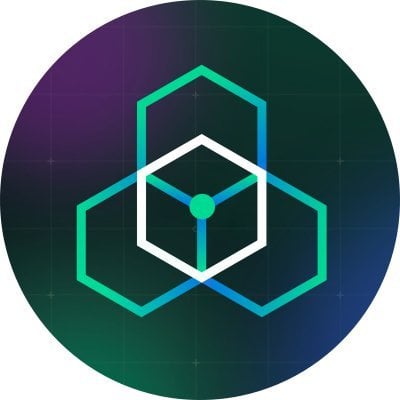Masa's "AI+Crypto" Guide: How the 2024 CoinList's First AI Project Serves the Broader AI Developer Ecosystem
Author: Deep Tide TechFlow
Introduction
There are countless crypto projects, and AI accounts for half of the hype. As a popular narrative that runs throughout the year, AI is constantly guiding the attention and trading decisions of the crypto market.
According to CoinGecko data, as of March this year, the total market capitalization of the entire AI sector has skyrocketed from $2.7 billion in April last year to $26.4 billion. Over the past 30 days, tokens related to AI projects have averaged an increase of between 145% and 297%.
Where expectations lie, hotspots follow. However, while the AI projects in the crypto market are diverse, the available Alpha seems to be in a transitional phase: established leaders like Fetch.ai and Ocean Protocol have long been valued, becoming the Beta of the last cycle; meanwhile, newly funded AI stars like Ritual and Myshell are still refining their products, let alone token issuance, making it difficult to quench immediate thirst with distant water.
In this context, in light of the three essential elements of AI—"computing power, algorithms, and data"—the only standout Alpha project in the current AI sector is Bittensor (TAO) as a leader in decentralized computing power, alongside Masa Network, which will launch its mainnet and token on April 11 as the top player in the decentralized data field, representing a segmented leading project in the current AI narrative market.
Masa's positioning regarding its "AI Data Chain" is also very clear—committed to building a personal data network for AI use, allowing users to earn rewards while contributing their data value, and effectively ensuring data privacy through technologies like ZKP, thus providing a massive data source for AI and large language model networks.

Last December, we detailed Masa's product principles and technical design in the article ++"Deep Dive into Masa Network: Awakening the Dormant Data Value of Web3, Exploring the Possibility of a Decentralized Google"++. Today, Masa Network is welcoming its biggest catalyst in the short term—the launch of its mainnet and $MASA token on April 11.
After several months, what changes and progress in Masa Network itself are worth noting in a better overall environment? In this issue, we will once again delve into Masa Network, uncover key catalysts beneficial to its token, and further research its product updates.
The First AI Project to Launch on CoinList This Year, Expectations at an All-Time High
For technically complex projects, let's first look at the more easily understandable market expectations and positive events. On March 7, Masa Network launched on CoinList and initiated a community round token sale.
So far this year, CoinList Launchpad has featured six projects: Subsquid, zkLink, Nibrum, Meson, Masa, and Bondex, with Masa being the only AI project among them.
At the same time, the token quota for the community round sale was sold out in 17 minutes, with oversubscription exceeding 6.4 times.

Historically, CoinList can be considered a touchstone for identifying the value of crypto projects. Many top projects in today's cryptocurrency market started on CoinList:
For example, Ocean Protocol, which is also in the AI sector, has seen about a tenfold increase since launching on CoinList; another well-known project, Solana, has become the most successful case on that Launchpad.
It is well known that the bull market cycle was the most glorious era for CoinList, with many future star projects like SOL and FLOW providing considerable wealth effects for users participating in public offerings. Now, as the bear market recedes and the bull market returns, whether Masa, under the AI narrative, can take up the baton of wealth creation for the new generation is indeed highly anticipated.
From the primary touchstone to the larger secondary market, the expectations mentioned above are another point that cannot be ignored.
Masa has secured $18 million in funding, attracting top overseas VCs such as Anagram, DCG, and GoldenTree. With the backing of AI and ZK technology narratives, expectations are evidently high.

Mainnet Launch on April 11, AI Business Thriving
Beyond capital market expectations, what tangible business does Masa Network have? In fact, most crypto AI projects have two types of business: one is that crypto enhances AI, and the other is that AI enhances crypto. Masa Network belongs to the former.
It is well known that the development of AI relies on three key elements: computing power, algorithms, and data. However, previous AI+Crypto projects have mostly focused on computing power. In reality, data, as the oil of the AI era, is just as important as computing power—especially at a time when critical data is locked away by large companies, there is a shortage of diverse data, and calls for data democratization are growing louder. The importance of AI data is becoming increasingly prominent.
Since 2023, there has been an explosive growth in AI developers, making controlling unique data a winning strategy for AI application developers in an era of gradually homogenized big data models—therefore providing decentralized data solutions for AI, Masa not only serves AI developers in the Web3 space but also caters to a broader range of AI developers in the tech field.
In short, based on a blockchain architecture, Masa aims to serve all AI developer ecosystems, covering both "Web2 and Web3" with a decentralized approach.
Specifically, Masa optimizes data collection, contribution, and value conversion, helping AI obtain broader, more diverse, and decentralized distributed data sources, while data contributors can also receive their rightful rewards and protect their privacy.
To summarize the above business in one sentence, it is a data market that balances factor protection and data value, connecting AI data demanders with data contributors.
In terms of privacy protection, Masa aims to return control of personal data to users.
Through its pioneering zero-knowledge Soulbound tokens (zkSBTs), you can simply understand it as an industry-leading encryption technology, treating it as a personal data storage locker that does not record privacy. Anyone with an internet connection can contribute their data and receive passive rewards in the form of MASA tokens.

Regarding data value, proprietary, high-quality, verified personal data is becoming more democratized, available for AI companies and large language models to use, adding massive and decentralized data sources for AI model training.
How does this data market connect both ends?
With the mainnet launch on April 11, Masa's current product structure has become clearer:
On the user side, you can easily contribute data to the Masa network by participating in tasks on the Masa application, using the Masa browser plugin to surf the web, or simply using products within the Masa partner ecosystem.
Additionally, every user can become a data scraper through Masa's web browser plugin.
The Masa Oracle network acts as a decentralized web data scraper, seamlessly extracting text from websites, Twitter feeds, verified websites, etc., to input into the database.
Thus, the most direct model users can feel is "contribute to earn," with an operation to actively stake data, such as:
All historical actions and information footprints you have in Masa Network will be encrypted and collected into your exclusive information storage box—zkSBT.
You can intuitively see this data on the Masa App, and have the right to choose to "stake" some or all of this data, which means actively "authorizing" it, agreeing to contribute this data for use by organizations with data needs during a specified time you set;
Because of your data contribution, you will receive corresponding rewards, which may take the form of the project's Masa tokens or stablecoins.

Therefore, essentially, Masa turns everyone into a data contributor, and everyone can become a node, becoming part of the AI infrastructure.
All contribution behaviors also correspond to specific products.
"quest-to-earn": Masa's APP application
"Surf-to-earn": Masa's browser plugin
"Node-to-earn": Become a Masa Oracle node, scrape data, and contribute unused computing power (CPU and GPU) to meet requests from global users and developers.

On the B-side, Masa is also matching data usage needs.
Developers can easily access this powerful dataset by setting up data staking pools on the Masa Network, directly rewarding users who choose to share their data. Developers can use this data to train "specialized" rather than "generalized" AI models, thus creating super-personalized AI agents, AI assistants, etc.
Compared to my research on Masa last year, the currently launched Masa on the mainnet has added new features—making large language models themselves more decentralized.
Masa allows anyone to easily choose from various LLMs, such as phi-2, bakllava, llava, and milstra. These models can be easily used on user-friendly platforms like Hugging Face, allowing B-side users to download them immediately and deploy them on Oracle Node Workers.
At the same time, decentralized data access allows LLMs to evaluate encrypted data in the network to draw conclusions or present results without disclosing any sensitive or personal information stored in the network.
Thus, overall, the best outcome that Masa can achieve is to enable a two-way free matching of AI data demand and supply.
Connecting the C-side and B-side data market, Masa Network clearly has diverse products to support it. But has its development received market feedback from product refinement to mainnet launch? How is user usage?
Since its launch in August 2022, as of the time of writing this article, Masa Network has rapidly accumulated over 1.4 million unique wallets; each wallet represents a contribution of personal data, made through the different products and methods mentioned above.

Corresponding to the wallet addresses contributing data, the number of various events captured in the Masa network is also significantly increasing.
From its official data dashboard, users' various behaviors in the crypto world, such as receiving, exchanging, mining, cross-chain activities, adding liquidity, and minting, are all recorded; at the same time, common web browsing events in Web2 can also be recorded, and their numbers continue to increase.

The massive multidimensional data from users is also key to supporting B-side data usage. The more data there is, the more decentralized and diverse it is, the more beneficial it is for AI training.
The Utility Value of the Token and Cross-Ecosystem Enhancement
In Masa's overall design, what role will the MASA token play?
Starting from both the C-side and B-side, MASA can be used in different incentive and usage scenarios.
First, incentivizing data supply: Masa incentivizes users to contribute personal data to the Masa Network. When businesses and developers use users' data, users can earn passive rewards in MASA.
Second, paying for data usage fees: Businesses and developers pay fees to access and use data, products, and services on the Masa Network. Fees can be paid in MASA tokens, stablecoins, and other blockchain-native tokens. All fees not priced in MASA will subsequently be exchanged for MASA tokens, a portion of which will be burned.
Additionally, MASA can also be used as a fee for managing personal data: Users pay MASA gas fees on the Masa Avalanche subnet to mint and manage their zkSBT (a type of encrypted personal data storage locker) and burn a portion of the gas fees.
Finally, tokens can also reward node operators. Masa Oracle node operators stake MASA to operate Masa's zk-oracle nodes. Node operators receive staking rewards in the first two years of network operation. Staked tokens are locked during the vesting period.
In terms of the economic model, from the official token distribution ratio, the team and private sale rounds take up a large share. However, there is a lock-up period of six months to one year after the public sale, followed by a three-year linear unlock.

For market valuation, the value of the MASA token derives from its utility value, forming a positive flywheel effect of the token during user usage and network expansion:
As individual users contribute massive and diverse data------more and more businesses/developers adopt------the demand side/consumption of MASA increases------circulation decreases and value rises------economic incentives increase, attracting more users to provide data….
In addition to utility value, another potential value of MASA comes from the "shovel effect" generated by connecting more ecosystems.
Recently, the project also announced a partnership with Layerzero, allowing more data from different chains to be contributed. This means that regardless of which public chain ecosystem users and AI developers are in, they can use Masa, enabling users on any chain to contribute data, thus becoming the underlying infrastructure for AI+Crypto driven by data across the entire chain, directly capturing on-chain users and on-chain data value.
At the same time, this could create effects similar to Wormhole and Pyth—anyone who has used it can be airdropped and has token benefit expectations, and this shovel effect may become one of the key factors for the token to accumulate expectations in the secondary market.

Conclusion
Starting from Web3 but not limited to it, Masa essentially serves all AI developer ecosystems, covering both "Web2 and Web3" with a decentralized Web3 approach:
As Masa's co-founder Calanthia Mei said in an interview with Bitcoin.com, "Personal data is a digital footprint; every online and on-chain operation (browsing, posting, trading) leaves a trace."
With the development of the digital economy and Web3, personal data has become extremely valuable for companies to understand users and train AI models. Therefore, using Web3 as a link and incentivizing data contribution and AI training through tokens, Masa Network, as a platform connecting supply and demand, possesses practical value beyond mere speculation on AI narratives. As for how far Masa Network can go, time and the market will naturally provide value-based answers.
Backed by the top narratives of AI+Crypto, with grand visions, if successful, Masa is likely to become the core infrastructure service component and data "water seller" for the global AI developer ecosystem covering both "Web2 and Web3," thus building an AI data chain across "Web2 and Web3," which holds immense imaginative potential but is undoubtedly full of challenges.
The future is always beyond imagination; let us wait and see.













